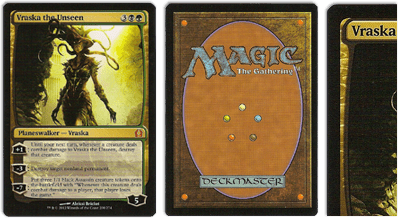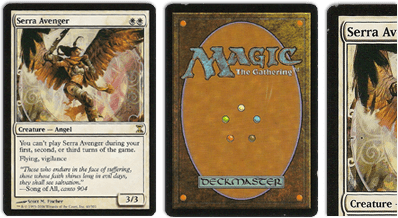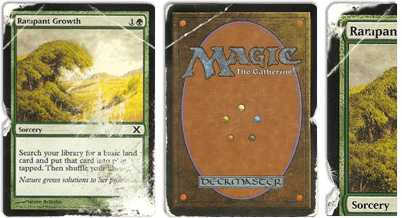This is the first introductory article of a series dedicated to helping Yugioh players, collectors, and enthusiasts in general understand how the Yugioh market works, how to save money, and how to make the most cost effective decisions along the way. I am not a financial advisor so please make sure you use this information to make the best decision for yourself.
Ok so first things first, why even bother investing in Yugioh cards in the first place? There are so many other things to invest in like bitcoin, stock markets, mutual funds, savings accounts etc. Well to answer this question, sure there are a lot of better things to invest in that might get you money faster with less risk but why are you here in the first place? You probably have some interest in Yugioh whether it’s collecting certain cards, playing in tournaments, watching the show, or just enjoying watching card prices chaotically fluctuate in the ever-changing Yugioh market.
In general, the rule of investing is diversifying, and I don’t mean just diversifying a portfolio by having a different variety of stocks, but rather investing in different avenues in general and the game of Yugioh is filled with plenty of opportunities to do so.
The pandemic resulted in a huge boom in the trading card market as people were at home and had to find ways to spend their time. This led to people being reacquainted with their childhood hobbies such as collecting cards whether it was Yugioh, Pokemon, Sports, etc. However, what people don’t tell you is, yes there was a boom, but it was mainly associated with vintage and collector cards. These were cards that were already tough to find based on the fact that they were from old sets from many years ago which stopped being printed. Furthermore, these cards were released around the time when many people were kids and therefore had a certain nostalgia and special memories associated with them because of the impact they had in allowing kids to enjoy their childhood.
However, cards in general have always been worth money even before the pandemic and big communities have always been present in card games, there was just that added hype factor when people were stuck at home and had to find other means of entertainment.
To sum up what I’ve said, Yugioh is something you should invest in only if you truly enjoy the game and play or collect because it can pay huge dividends not just helping you save money on cards that you collect/use to play, but also to generate some income on the side if you’re smart with your decision making. With that being said, all investments carry an element of risk and Yugioh is no exception. There will be times when you may buy a card expecting it to increase in value and waiting years only for it to decline or stay the same. There may also be times when you sell a card because you feel it will decline in value only for it to go up or stay the same. The main point of emphasis is that the Yugioh market is VERY volatile and to invest in this game and save money, you need to be risk-averse and patient, just as you should be when investing in other things. That means having the stomach to take many losses along the way because not everything will always work in your favor. The only way to mitigate those risks is broadening your knowledge base and understanding how the Yugioh market works, and this article along with future articles will help you do just that.
Ok so if you’ve read on to this point, I’m assuming you’re ready to get started and take a dive into the Yugioh market.
This article will provide a general understanding of the Yugioh market and the basics of things to think about when buying a card. It will also cover the various different types of markets in Yugioh. Future articles will elaborate on these points as well as cover different market trends that affect the Yugioh market as a whole.
There are three different types of markets in Yugioh. It is important to understand each one because they all influence and impact the price fluctuations of cards but in different ways.
The first is the casual market. This market involves people who collect, play, or do both but without trying to spend too much money to enjoy the game. In the game of Yugioh, the same card may be reprinted in various sets to make it more easily accessible for players who want to either play or own the card in their collections. The card can be reprinted as a higher rarity or as a lower rarity. Generally, the highest rarity to lowest rarity of Yugioh cards is as follows:
- Starlight Rare
- Ghost Rare
- Ultimate Rare
- Pharaoh’s Rare
- Collector’s Rare
- Secret Rare/Prismatic Secret Rare
- Ultra Rare
- Super Rare
- Rare
- Common
The list does not include shatterfoil rares, mosaic rares, duel terminal, platinum, or gold rares as they are not included in as many sets and these rarities can be very subjective when it comes to whether players value them or not.
The casual market focuses on lower rarity reprints of cards because as a card is reprinted, the reprinted version is usually worth less and is more easily available as long as it is reprinted in a lower rarity. Casual players in Yugioh want to enjoy the hobby/game without having to spend too much money therefore they will gravitate toward the lower rarity reprints of cards.
The second is the collector market. This market involves people who collect cards from various sets because it has value and meaning to them or because they like hoarding expensive things. Whatever the case may be, these are cards that are kept for showcasing or sleeved in binders rather than being used for play. This market is the biggest market because everyone collects based on what they like. Usually, these markets are associated with older, harder to find cards in their highest rarity. An example would be a Red-Eyes B. Dragon BPT promo from 2002 which would be more sought out by collectors versus a Red-Eyes B. Dragon from a newer set even if they have the same rarity. That being said, there are many new cards which people go for because they are extremely tough to find such as starlight rares from newer sets which are 1 every 2 cases (24 booster boxes) or other high rarity cards.
The last but not least and the one which is the most volatile is the competitive market/meta market. This market involves people who play competitively in Yugioh tournaments. This market changes almost daily because there are always new strategies being implemented to counter the best decks. The best decks change every few months due to the banlist which Konami releases to keep the game fresh for players. This causes strategies to change almost weekly with people finding all kinds of cards, whether older or newer, to deal with these different strategies.
Now that we’ve covered the different types of markets, here are some criteria to look for when assessing how valuable a card is. These points will be elaborated on in future articles.
- How many different types of Yugioh markets does it hit? (Casual, collector, meta, etc.)
- What kinds of players are looking for this card?
- How many copies of the card do you need? (between 1-3)
- Is it a generic card or does it work in a specific archetype?
- Is the card a staple card?
- How many listings on the market are there for the card?
- Is it easily accessible?
- Is it in its highest rarity?
- Would someone buy a lower rarity of the card?
- How many reprints does it have?
- When was its last printing and how old are the sets that it was printed in?
- Does it have future potential?
- Based on the current game state of the meta, can the card be effective either now or a few months from now?
- Is it an old school card or a newer card?
- Condition of the card? (Near Mint, lightly played, damaged etc.)
All of these criteria are important when assessing the value of a card and understanding and implementing this criteria into your thought process can help you stay ahead of the game. Remember, market watch articles are not always about money, they also help players forecast future trends and make them better equipped in tournaments. You might be wondering what some or all of these points mean. What has been mentioned so far is just a little snippet into the Yugioh market and future articles will elaborate on this information and touch upon more specifics.


 '
' '
' '
' '
' '
'